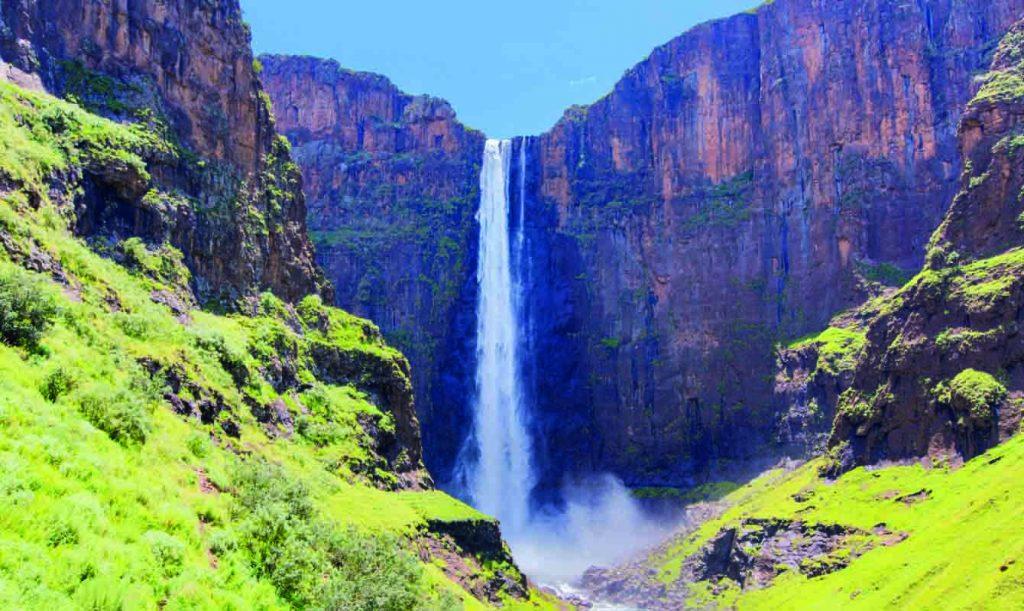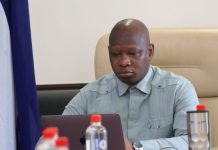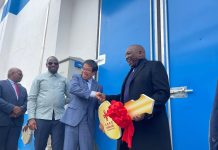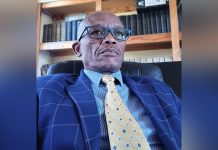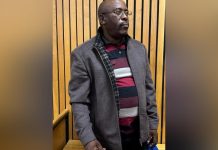Africa-Press – Lesotho. COMMUNITIES around the ’Maletsunyane Falls in Semonkong have started reaping the benefits of staying close to a tourist attraction following the government’s decision to cede 10 percent of gate takings for local development initiatives in 2017.
The community recently received a cheque for M14 000, which is 10 percent of money collected as entrance fees last year. The Lesotho Tourism Development Corporation (LTDC) introduced entrance fees at the ’Maletsunyane Falls as part of efforts to develop one of the country’s premier tourist resorts to attract more domestic and international visitors.
The local community was also incorporated in the running of the tourist attraction. ’Maletsunyane Falls is located in an un-spoilt area in Semonkong, about two hours’ drive south-east of Maseru, deep in the mountainous region of the country.
It is a 192-metre waterfall dropping into a gorge, splashing into a natural pit that forms a thundering sound and billows of smoke ascending above the ravine hence the name Semonkong (Place of Smoke).
Many tourists go there to adore the beautiful views of lush valleys and mountain streams along the way to the falls. The fall also attracts a steady stream of visitors who come to experience the pony treks, hikes, abseiling and waterfalls.
The abseiling is the big descent down the waterfall, the longest commercially operated single-drop abseil beside the plunging water. For over a century ever since the falls became a tourist attraction, local communities had not benefited from it.
The local chief and councilor beamed with smiles while receiving the cheque. The money will be used to improve accessibility to the bottom of the falls.
Tourism Minister, Advocate Lekhetho Rakuoane, handed over the cheque to the Semonkong Tourism Development Group (TDG), which was set up to map out how locals can benefit from natural and historic tourist attractions in the area.
“Although this money is not much, what matters is the intention. We still have to work harder,” Rakuoane said.
He said there is a discussion to establish horseracing and gambling facilities in Semonkong. Rakuoane urged the TDG to be committed to their work. “You must ensure that there won’t be any corruption and fraud with the money on your watch,” he said.
The LTDC will monitor how the group uses the funds. Rakuoane urged the local community to protect the tourist developments. LTDC Acting Chief Executive Officer, Sehlabaka Ramafikeng, said tourism can only become meaningful to people when residents from key areas of attractions benefit.
He said they had realised that despite Semonkong having many tourist attractions the community had not benefitted from the tourist spots. “We saw it fit to establish the TDG and signed an agreement to share the annual gate collections to improve the people’s livelihoods,” Ramafikeng said.
“The success of the tourism project here will mean more money being distributed to the communities,” Ramafikeng said.
The Semonkong Tourism Development Group Chairman, Lekhula Ntai, said the introduction of entrance fees to the falls had created jobs for local people.
He said the outbreak of the Covid-19 pandemic had resulted in low tourist arrivals, while the bad road network needs to be improved. “We lose a lot because the place is hard to reach,” he said.
Ntai said visitors to the falls have been paying entrance fees since January last year. He said the disbursement of the money will serve as a motivating factor for the workers to work harder.
“People visited the falls without paying anything (in the past). Now we are very happy,” he said. He said more tourists will mean the majority of the people in Semonkong will also benefit as they offer accommodation and sell their handcrafts.
Regina Thetsane, a senior lecturer in the Department of Business Administration at the National University of Lesotho (NUL), wrote in a research paper that local groups in and around existing and potential tourism destinations should be included in the running of tourist attractions.
Thetsane said the focus should be on the creation of employment opportunities for the young and women. “Participatory planning enhances sustainability of the ‘product’ as it generates ownership,” Thetsane said.
“This custodianship immeasurably enhances the experiences of visitors especially when the combination of wildlife, nature and cultural ‘product’ is delivered by local people in special surroundings and marketed and maintained by the private sector and authorities at the national level,” she said.
She said tourism promotes a level of economic growth conducive to increasing social well-being and stability of the local communities. “Local participation has been regarded as a positive force for change (which is key to a) country’s development,” she said.
“Participation of local people is a criterion often agreed on as an essential condition for development and sustainability of any form of tourism.
” She said there has been a relatively slow realisation of the importance of community participation in tourism development.
This, she said, might be the reason why in many developing countries, Lesotho included, tourism has been developed and controlled by large multinational companies that have little regard for local social and economic conditions.
“These large multinational companies would make decisions to be implemented by the local community and yet the local communities were not involved in the initial planning of the project,” she said.
Thetsane said the communities should also be encouraged to form tourism related associations that will represent them in the National Community Council (NCC) for effective management of tourism in Lesotho.
“As a result, the education and awareness campaign should not only be done by LTDC. It should involve all the tourism institutional structures in Lesotho, including the local community leaders,” she said.
“The local community leaders should play a major role in educating and creating awareness of tourism benefits in their respective villages through public gatherings, workshops and meetings.”
For More News And Analysis About Lesotho Follow Africa-Press

